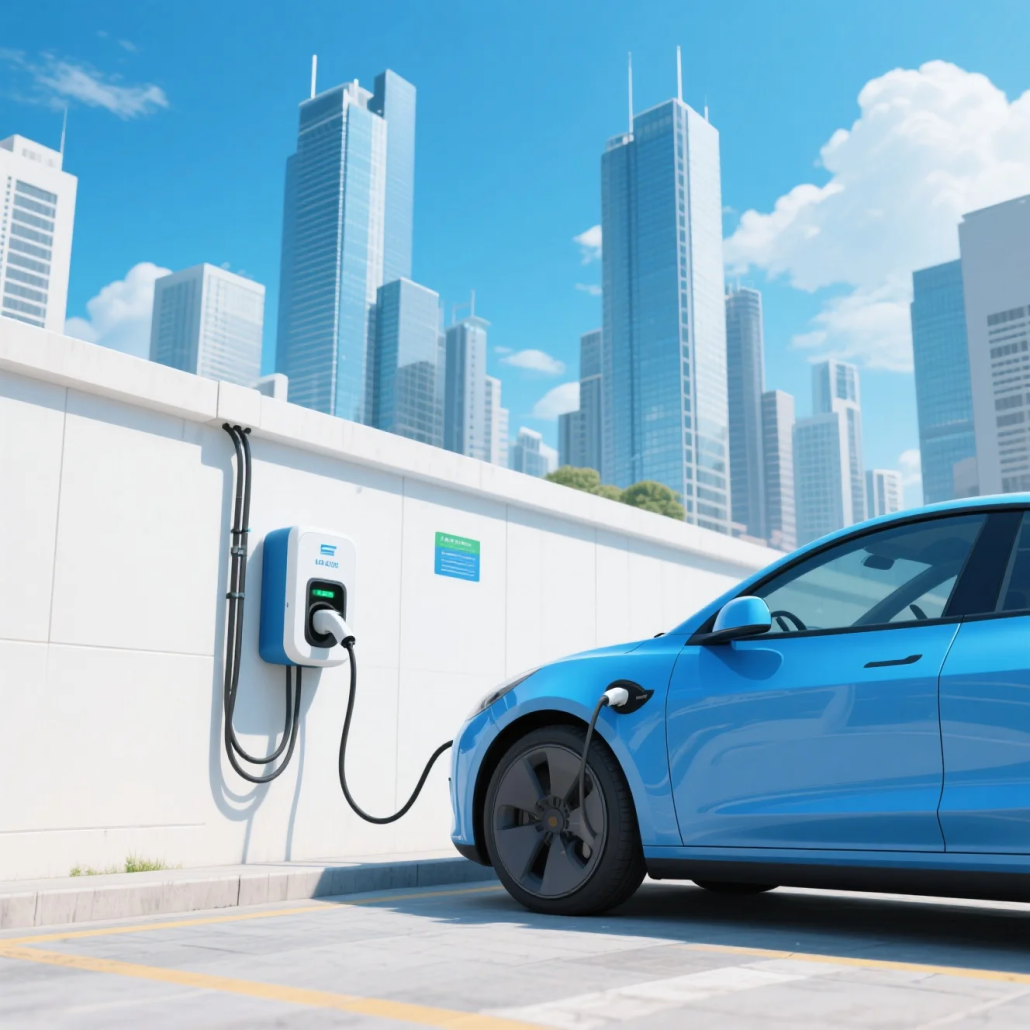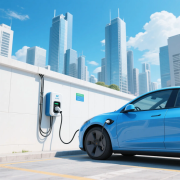The charging pile industry is moving towards a new era of “full-scenario freedom”
As the wave of new energy vehicles sweeps the world, energy replenishment efficiency and scene adaptability have always been the core pain points of the industry. CATL’s latest sodium-ion battery technology, with its disruptive performance breakthrough, paints a more inclusive, efficient and sustainable future for the charging pile field. The essence of this energy revolution lies not only in the iteration of battery technology, but also in redefining the boundaries and possibilities of charging piles through material innovation and scene adaptation.
Breakthrough in sodium battery technology: The “low temperature restricted zone” and “cost shackles” of charging piles are broken
CATL’s second-generation sodium-ion battery (sodium new battery) solves the performance degradation problem of traditional lithium batteries in extremely cold environments with an energy density of 175Wh/kg, full temperature adaptability from -40℃ to 70℃, and a cycle life of more than 10,000 times. For example, at a low temperature of -40℃, the sodium new battery can still maintain 90% of the available power, and supports 5C peak charging, which can replenish 80% in 15 minutes310. This feature makes the layout of charging piles in the northern high-cold areas no longer limited by battery performance, greatly expanding the geographical coverage of the charging network.
In addition, the sodium resource reserves are 421 times that of lithium, with significant cost advantages. With the large-scale mass production of CATL (planned annual production capacity of 60GWh), the cost of sodium batteries is expected to be on par with lithium iron phosphate in 2025, and can be reduced to less than 70% in the long term. This means that charging pile operators will have more room for equipment procurement and maintenance costs, promote charging piles to sink to third- and fourth-tier cities and rural areas, and accelerate the optimization of the “car-to-pile ratio”.
Acceleration of the supercharging era: “A cup of coffee, full charge” under the synergy of sodium and lithium
The ultimate goal of charging piles is to achieve the experience of “charging like refueling”. CATL’s “Xiaoyao Dual-core Battery” combines the low-temperature performance of sodium batteries with the high energy density of lithium batteries through the sodium-lithium synergistic architecture, supporting a range of 700 kilometers and a stable output of 310 in extremely cold environments. With the 12C supercharging technology of the second-generation Shenxing supercharging battery (520 kilometers of charging in 5 minutes), the power demand of charging piles has jumped from the traditional 60kW to 500kW+, and the popularization of liquid-cooled supercharging piles and integrated photovoltaic storage and charging stations will become an inevitable trend.
For example, Shenzhen has built more than 1,000 supercharging stations. In the future, the supercharging efficiency of “1 kilometer per second” will no longer be limited to first-tier cities, but will be replicated throughout the country and even overseas through the technical empowerment of CATL89. This technical collaboration not only improves the efficiency of a single pile, but also upgrades the charging pile from a “power porter” to an “energy router” through intelligent power distribution and vehicle-to-grid interaction (V2G), participating in new energy ecosystems such as grid peak regulation and virtual power plants9.
Industrial chain collaboration: from “single energy replenishment” to “full-scenario energy network”
CATL’s innovation is not limited to batteries. Its “lithium-sodium AB battery system” and “electric-to-electric range extension technology” achieve deep coupling between charging piles and vehicle energy systems through BMS precise control and thermal management redundant design1510. For example, sodium batteries can be used as a SOC detection scale to extend the pure electric range by more than 10 kilometers. At the same time, the cell defect rate can be reduced to the PPB level through smoke isolation technology, which greatly improves the safety of the charging process.
This technical path provides charging pile operators with a more flexible business model: sodium battery supercharging piles are promoted in the extremely cold northern regions, iron lithium supercharging networks are deployed in the high temperature areas in the south, and the charging pile site selection and operation efficiency are optimized through data platforms. Leading companies such as Teladian and Xingxing Charging have built platform-based revenue through scale and data assets. In the future, combined with the low cost and high adaptability of sodium batteries, the profit model of charging piles will expand from a single service fee to multiple scenarios such as energy trading and vehicle-network interaction.
Policy and market resonance: The “golden decade” of charging piles has arrived
National policies are strongly promoting the construction of charging infrastructure, with the goal of supporting the access of 12 million charging piles to the distribution network by 2025. The breakthrough of sodium batteries comes at the right time: its low-carbon properties (carbon emissions are 30%-50% lower than lithium batteries) and resource autonomy perfectly match the “dual carbon” goal and energy security strategy. In addition, the penetration rate of electric vehicles in overseas emerging markets (such as Southeast Asia and the Middle East) is about to explode. With the cost and technological advantages of sodium batteries, Chinese charging pile companies are expected to replicate the “Chinese model” in the global market.
Conclusion: The boundaries of energy freedom are awakening
CATL’s sodium battery technology is not only a revolution in materials science, but also a turning point for the charging pile industry from “quantitative change” to “qualitative change”. When charging piles are no longer limited by temperature, cost and efficiency, when the energy replenishment network covers Mohe and the Sahara, and when every kilowatt-hour of electricity can flow intelligently – the ultimate vision of new energy vehicles replacing fuel vehicles will eventually be accelerated by the awakening of technology.
The future has come, and the bright picture of charging piles is slowly unfolding from CATL’s sodium battery breakthrough.





Leave a Reply
Want to join the discussion?Feel free to contribute!